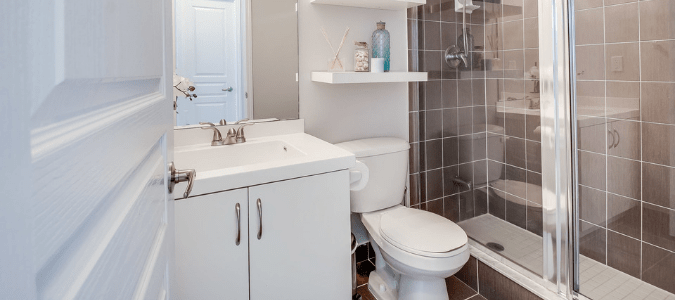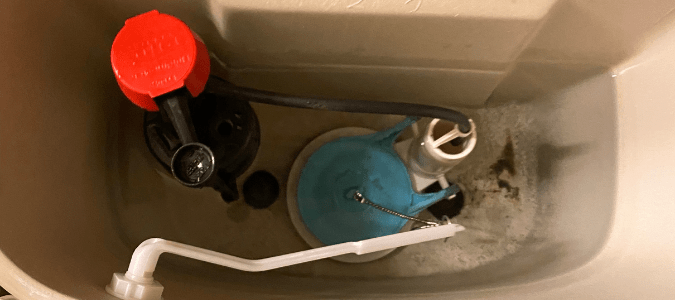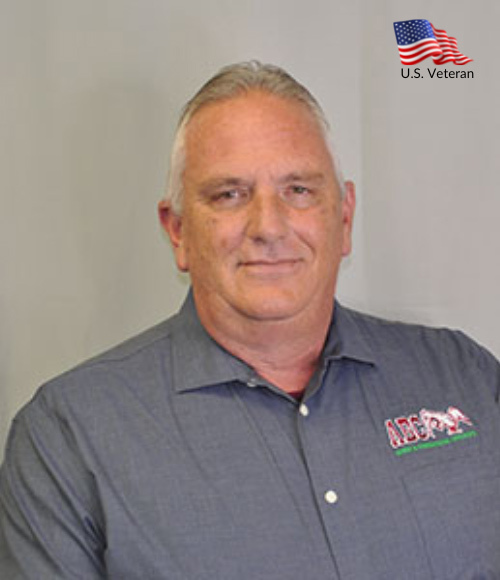Panic can quickly set in when your toilet won’t flush. What could have gone wrong and is there anything you can do to fix it?
Fortunately, there are some easy fixes for this problem. Unfortunately, others will require the help of a licensed plumber.
Let’s dive into these common issues and their fixes.
The Water Shut-off Valve Is Turned Off
In order for the toilet to flush, the water shut-off valve that feeds water into the tank of a toilet has to be on. Occasionally, something can hit the shut-off valve or it can get adjusted while cleaning. When this happens, the toilet only has one or two flushes before it runs out of water.
To check if this is your issue, look behind the base of the toilet. Your shut-off valve should be a few inches off the floor. Make sure the valve is turned all the way to the left. If it’s not, turn it counterclockwise until it’s turned on. Then, give it a few minutes to reset before trying to flush.
The Toilet Handle Isn’t Attached Correctly
If you aren’t hearing or seeing any movement when you go to flush the toilet, this could be your problem. Luckily, this is a pretty quick and easy fix, especially if done by a licensed plumber. Start by taking the top off your toilet tank. You should see that the flushing handle has a chain connected to the flapper. As you press on the handle, the flapper should raise and dump water into the bowl. However, if the chain has a broken link or has gotten disconnected, you may need a replacement or to put the chain back in place.
There’s a Clog
If someone has used too much toilet paper or something got flushed that shouldn’t have, you may have a clog. If your toilet bowl is full, you’ll want to scoop some of the water into a bucket to give your plunger some space. Then, put your plunger in the bowl, ensuring there is a snug seal around the opening at the bottom of the toilet bowl.
Next, you’ll plunge into the toilet with a straight up and down motion. Continue doing this until you see the water flow out of the toilet bowl and into your pipes.
If you can’t seem to get your toilet unclogged, you’ll want to contact a licensed pro to address this plumbing problem. This is because your issue could be something more serious, like a clog in the drain line. Another sign that your issue is more serious is if your toilet bubbles when flushed.
The Toilet Is Running Due to a Damaged Flapper
If your toilet starts to flush but then won’t stop running, it’s likely that either the flapper in the tank is broken or the fill valve has a faulty seal. To check if this is your problem, take the top of the tank off and set it to the side. If your flapper looks warped or damaged, it’ll need to be replaced. Fortunately, this is a relatively easy and quick plumbing repair.
The Water Level Is Set Too Low in the Tank
If your water level is set too low, then there isn’t enough water to get flushed into the bowl. To see if this is your issue, you’ll need to look in the toilet tank. The water should come up to about one inch below the top of the overflow tube. In many cases, this is an easy fix.
Sometimes, you just have to twist the shut-off valve so that there’s more water flowing into the tank. This valve can sometimes get bumped while cleaning. Other times, the float ball might have been adjusted improperly. When this happens, the float ball signals to the toilet that the tank is full before it really is. In other cases, the problem may be more serious. The root cause could be something that needs to be addressed by a plumber, such as water pressure problems or pipe leaks.
If you’re dealing with a toilet that won’t flush, you may notice the water level is low or high in the toilet. But, how much water should be in your toilet bowl?
How Much Water Should Be In Toilet Bowl?
You can check to see if enough water is in the toilet bowl by looking for a mark inside the toilet tank. This mark is usually an inch or two below the fill valve and the overflow tube. Whether you have too much or too little water in the bowl, your issue may be a misadjusted float, a worn flapper or a blockage somewhere in your pipes.
Misadjusted Float
If your float is adjusted incorrectly, your toilet may never stop filling, your tank might under-fill or you could be wasting water by filling the tank with too much water. Sometimes, homeowners will adjust their float so that less water flows into the bowl in an effort to conserve water. If your toilet tank is not filling all the way, someone may have adjusted the float to reduce water waste.
Worn Flapper
Just like everything in your home, your flapper can become worn out over time. One sign that your flapper has worn out is that your toilet is constantly running. To test if your flapper is the issue, put a few drops of food coloring into the toilet tank water. Don’t flush the toilet and come back in 30 minutes. If you find colored water in your toilet bowl, it’s time to replace the flapper.
Blockage in Your Pipes
If there’s a blockage in your pipes, it’ll be harder for the contents of your toilet bowl to be disposed of. While a clogged toilet is typically something a homeowner can handle on their own, a deep clog is something that should be handled by a professional. For example, a main drain line clog is something serious that a licensed plumber should address.
Signs Your Main Drain Line Is Clogged
A main drain line clog can cause serious issues. One of the most apparent indicators of a main drain line clog is when water starts backing up in random places. For example, when you flush the toilet, water comes up in your bathtub. Similarly, when you run your washing machine, your sink might start to overflow. Additionally, the water that comes up will likely be dark and stinky. Keep in mind that this water can have raw sewage, so be careful around it.
Other signs are slow-moving drains and gurgling sounds coming from the drain.
There are a number of reasons why your main drain line can clog, including:
- Tree roots growing into the pipes
- Items getting poured down drains that shouldn’t be, like fats, oils, paper towels and sanitary products
- Shifting soil around the pipe
- Corrosion within the pipe
- Construction near the line
- Heavy traffic above the sewer pipe
- Damaged pipe joints
If this happens to you, your first step should be to shut off your water. Then, contact a plumber to clean your drains. This issue is something that homeowners shouldn’t handle. These drain lines are buried deep underground and you need special tools to access them.
Once you have repaired your main drain line clog, there are some things you can do to prevent it from occurring again. For one, don’t pour things down your drain that shouldn’t go down your drain. Some things that shouldn’t go in drains and garbage disposals include:
- Bones
- Grease, fat and oil
- Rice, pasta and other grains
- Egg shells
- Coffee grounds
- Paint
- Nuts
- Potato peels
- Fibrous vegetables
- Corn husks
You can also maintain your drains by signing up for ongoing plumbing maintenance with a reputable company.
ABC Can Help With Your Toilet and Pipe Problems
When dealing with plumbing problems, it’s not worth making a mess yourself. Instead of trying to learn. the ins and outs of plumbing, contact ABC Home & Commercial Services. Our licensed professionals can efficiently diagnose and repair any plumbing issue you may be having.



